In the dense rainforests of South and Central America, an extraordinary evolutionary drama unfolds daily. The vine snake (Oxybelis fulgidus), a master of disguise, has perfected an ingenious hunting strategy that showcases nature’s complexity. This remarkable reptile doesn’t just look like a vine, it behaviorally mimics a broken branch swaying in the breeze to lure curious monkeys into striking distance. This deception represents one of nature’s most sophisticated examples of both mimicry and predatory behavior, demonstrating how evolution can produce seemingly intelligent strategies in the endless arms race between predator and prey.
The Vine Snake’s Identity
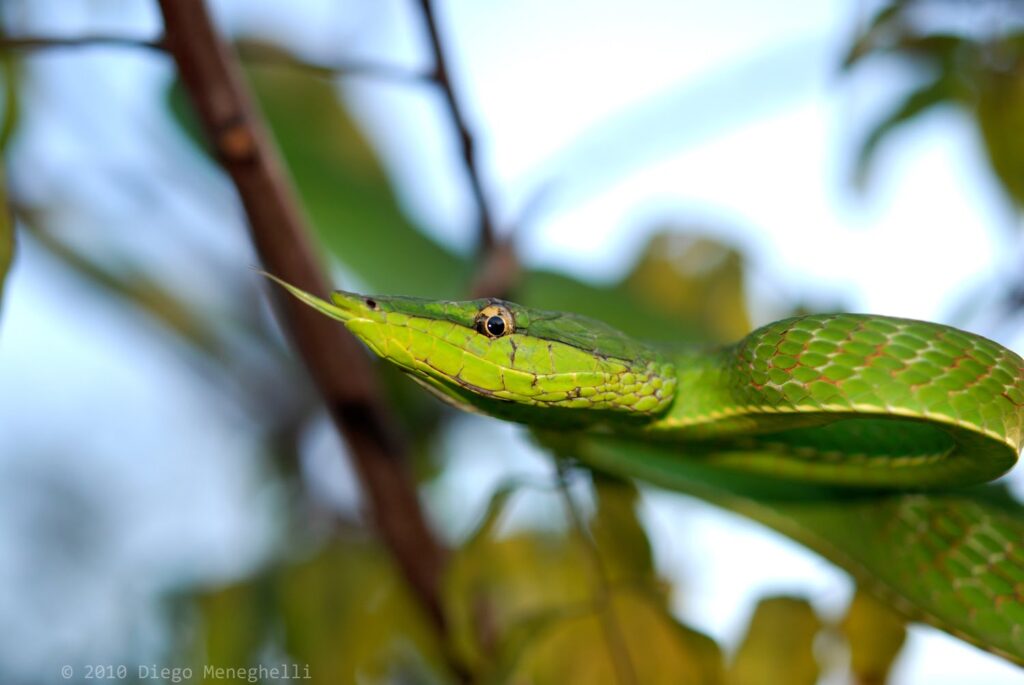
The vine snake (Oxybelis fulgidus), also known as the green vine snake or the slender whip snake, belongs to the Colubridae family of snakes. Native to the tropical regions of Central and South America, this remarkable reptile has evolved to become virtually indistinguishable from the vegetation in its habitat. Growing to lengths between 4 and 6 feet, these slender snakes possess an elongated head that enhances their vine-like appearance. Their vibrant green coloration, which can sometimes appear brownish depending on the individual, provides perfect camouflage against the lush foliage of their rainforest home. Unlike many other snake species that rely on bulk or strength, the vine snake’s body is exceptionally thin and lightweight, allowing it to extend across gaps in the canopy without breaking the thinnest branches.
Evolutionary Marvel of Camouflage
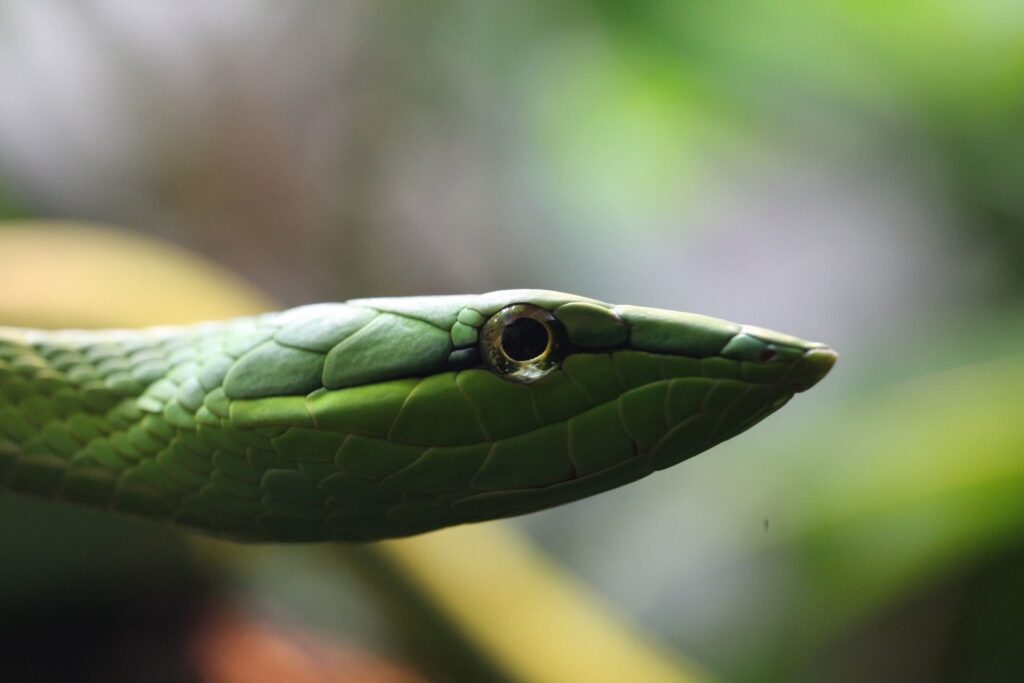
The vine snake’s appearance represents a spectacular example of evolutionary adaptation through both form and coloration. Their slender bodies, which rarely exceed the diameter of a human finger, mimic the thin vines and branches that make up their forest habitat with uncanny precision. This snake’s head is dramatically elongated and pointed, transitioning seamlessly from its neck in a way that eliminates the distinctive head shape most snakes possess. Even more remarkable is the texture of their scales, which don’t have the typical glossy appearance of many snake species but instead feature a matte finish that prevents sunlight reflection that might otherwise give away their position. The vine snake’s adaptation goes beyond mere appearance—even their movement patterns have evolved to replicate the gentle swaying of vegetation in the breeze, creating an integrated camouflage system that functions on multiple sensory levels.
The Broken Vine Deception

What truly distinguishes the vine snake from other camouflaged predators is its active behavioral mimicry, particularly the “broken vine” hunting strategy. When hunting, these snakes position themselves between gaps in the vegetation and hold their bodies in a distinctive zigzag pattern that precisely resembles a broken branch. This positioning is not random but carefully executed to create the illusion of a damaged vine hanging in the forest canopy. The snake will then introduce subtle movements that imitate how a broken branch might sway in the forest breeze, creating a tantalizing visual puzzle for curious primates. This behavior exploits the natural investigative tendencies of monkeys, who typically inspect unusual patterns in their environment that might signal food or potential threats. By creating this precise illusion, the vine snake transforms from a passive ambush predator into an active lurer, demonstrating a hunting strategy that borders on what humans might recognize as cunning.
Primate Targets and Their Curiosity
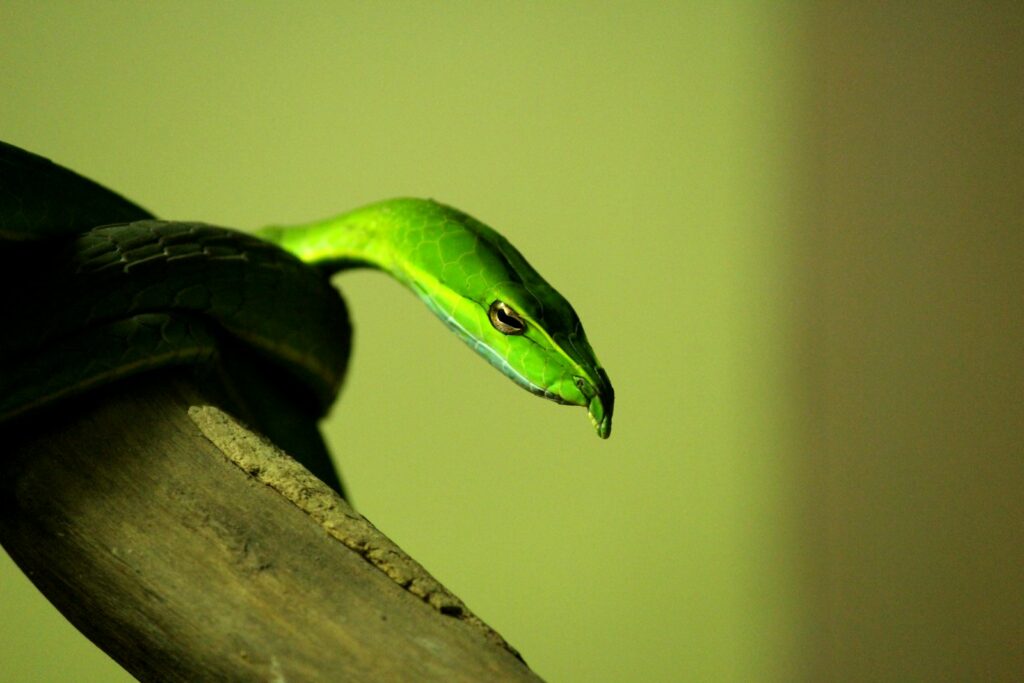
The vine snake’s deceptive strategy specifically targets various monkey species inhabiting the same rainforest canopies. Smaller primate species like tamarins, marmosets, and young capuchin monkeys are particularly vulnerable to this hunting technique. These primates possess naturally inquisitive behaviors as part of their foraging strategies, constantly evaluating their surroundings for both food opportunities and potential dangers. When a monkey encounters what appears to be a broken vine moving slightly differently than surrounding vegetation, its curiosity often compels it to investigate more closely. This investigative behavior has evolved as a survival advantage in most contexts, helping monkeys discover hidden fruit or identify structural weaknesses in branches before attempting to traverse them. However, this same adaptive curiosity becomes a liability when faced with the vine snake’s specialized mimicry, creating a fascinating evolutionary paradox where a behavior that typically enhances survival instead leads primates into danger.
The Perfect Strike
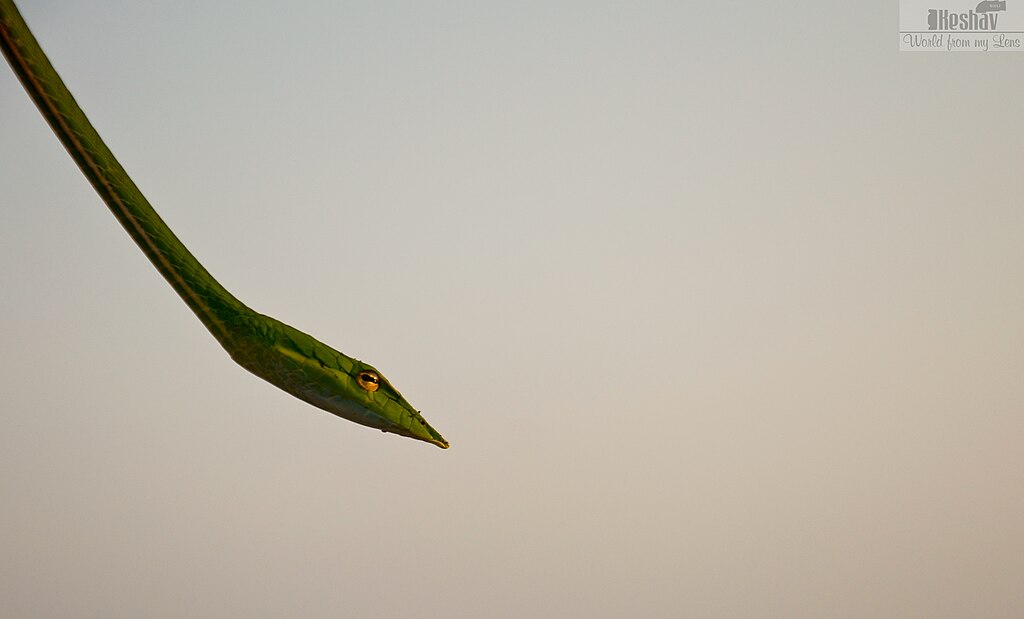
The vine snake’s hunting sequence culminates in one of nature’s most precisely executed predatory strikes. Once a curious monkey has been drawn close enough by the broken vine deception, the snake remains perfectly still until the exact moment when its prey is within striking distance—typically just inches away. Unlike many venomous snakes that rely on a rapid strike followed by release, the vine snake launches forward with exceptional accuracy, often targeting the face or neck region of its prey. Their fangs, while not particularly large, are positioned at the rear of their mouths (a characteristic of rear-fanged snakes) and deliver a mild venom that quickly immobilizes small prey. The strike itself is remarkably fast, with high-speed photography revealing that from stationary position to contact occurs in less than 0.2 seconds—too quick for the monkey’s visual system to detect the movement until it’s too late. Following a successful strike, the snake maintains its grip and begins the process of swallowing its prey whole, typically head-first.
Venom Composition and Effects
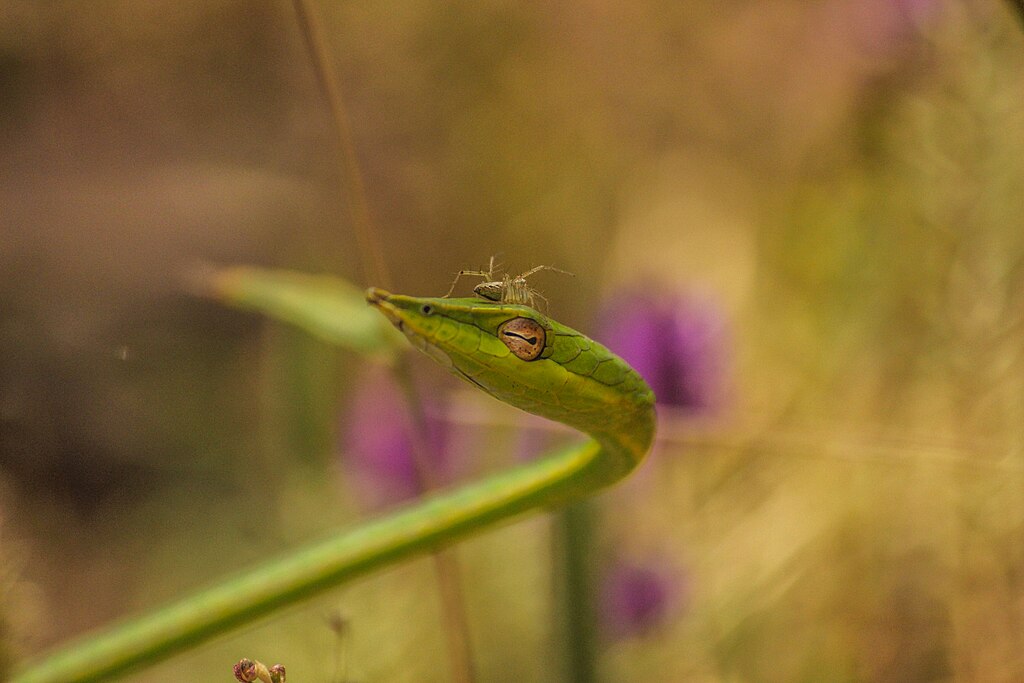
While not considered dangerous to humans, the vine snake’s venom is perfectly tailored for its primate prey. Classified as a mildly venomous colubrid, this snake produces a specialized toxin delivered through enlarged rear fangs in a system known as opisthoglyphous. The venom contains compounds that primarily affect small mammals and birds, causing rapid paralysis that prevents escape without necessarily killing the prey immediately. Biochemical analysis has identified several unique components in their venom, including enzymes that disrupt neuromuscular function and compounds that affect blood pressure. The delivery system requires the snake to “chew” slightly to work the venom into the wound, a characteristic behavior observed after successful strikes. Interestingly, research suggests the venom composition varies slightly between populations, potentially reflecting local adaptation to different prey species available in various parts of their range.
Beyond Monkeys: Diverse Prey Selection

While the broken vine strategy is most famously employed against monkeys, vine snakes have developed a versatile hunting approach that targets multiple prey species. Birds constitute a significant portion of their diet, with the snake using similar camouflage techniques but modified behaviors to lure avian prey within striking distance. Small reptiles, particularly lizards, are also regularly consumed, with the snake relying more on pure camouflage rather than active mimicry when hunting these prey items. Researchers have documented vine snakes consuming everything from hummingbirds to tree frogs, demonstrating remarkable dietary flexibility. This broad prey base proves advantageous in tropical ecosystems where any single food source may be seasonally unavailable or unpredictable. Interestingly, their hunting strategies appear somewhat adaptable, with behavioral differences observed when targeting different prey types—suggesting a level of cognitive flexibility not commonly associated with reptiles.
Scientific Studies and Observations
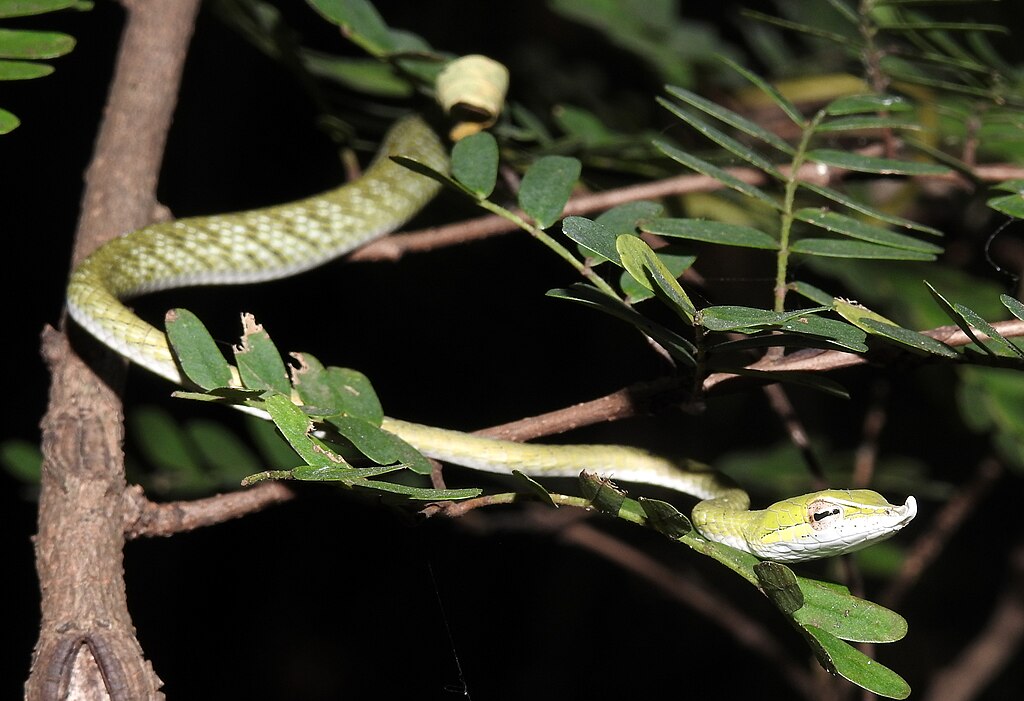
The vine snake’s remarkable mimicry has attracted significant scientific attention, though studying these behaviors presents substantial challenges in dense rainforest environments. Field researchers have employed specialized camera systems mounted in the canopy to capture natural hunting sequences without human presence altering behaviors. A landmark 2015 study published in the Journal of Experimental Biology used high-speed photography to analyze the precise movements involved in the broken vine deception, documenting how the snake creates micro-movements that enhance the illusion while remaining fundamentally motionless to avoid detection. Behavioral ecologists have been particularly interested in the cognitive implications of this hunting strategy, debating whether it represents learned behavior, instinctive programming, or some combination of both. Recent research using neuroimaging techniques has begun exploring the neural pathways involved in these complex behaviors, with preliminary findings suggesting specialized brain regions dedicated to both spatial positioning and timing of movements involved in the mimicry.
Evolutionary Development of the Strategy
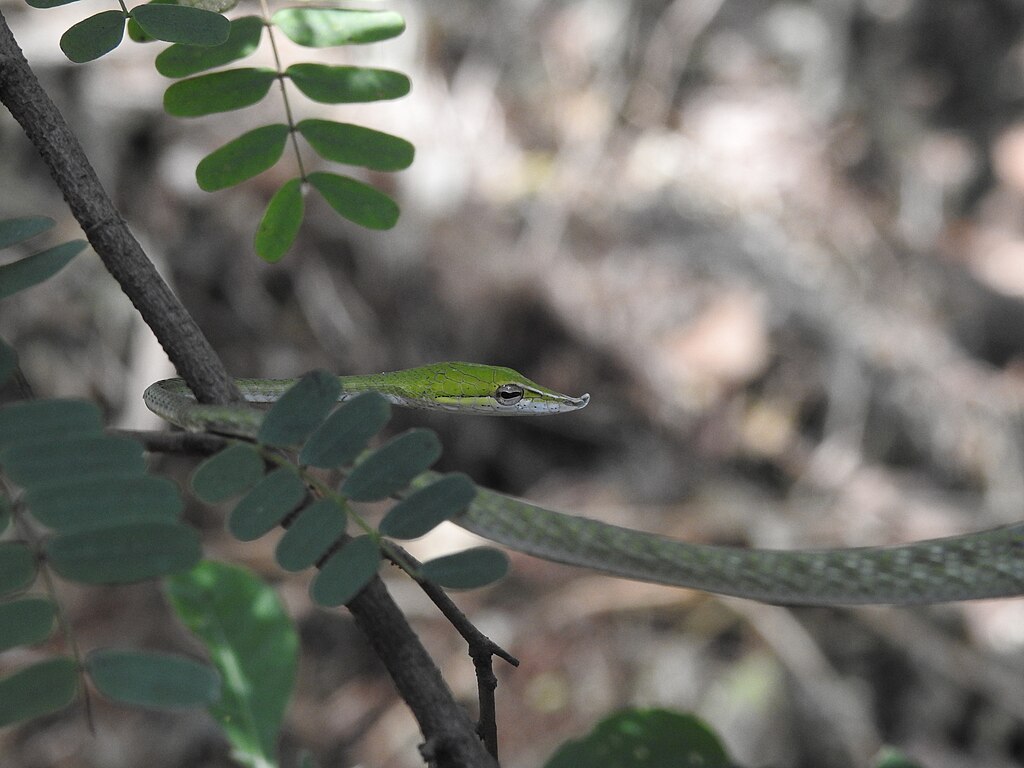
The broken vine hunting strategy represents a remarkable example of convergent evolution, where selective pressures have produced a specialized behavior that maximizes hunting success in the canopy environment. Evolutionary biologists believe this behavior developed gradually over millions of years, beginning with simple camouflage adaptations that were progressively refined through natural selection. Analysis of related snake species suggests the behavioral component evolved after the physical adaptations were already established, with fossil evidence indicating the distinctive body shape preceded the complex hunting behaviors. The strategy likely developed in response to the cognitive abilities of primate prey, creating an evolutionary arms race where improvements in monkey vigilance were countered by increasingly sophisticated snake deception. This represents a fascinating example of behavioral co-evolution, where predator and prey continuously influence each other’s development over evolutionary time. Some researchers have suggested this specialized strategy emerged during periods of food scarcity, when competition for resources would have favored innovative hunting techniques.
Habitat and Geographic Distribution
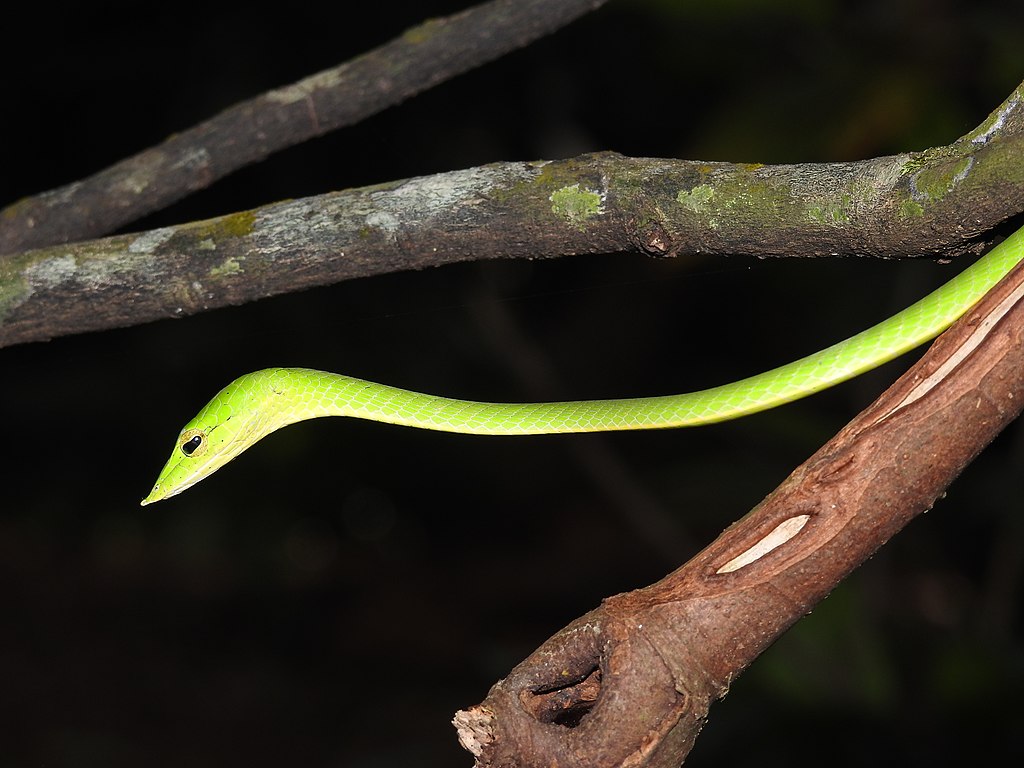
Vine snakes inhabit a broad range across the Neotropical regions, spanning from southern Mexico through Central America and into the northern half of South America, including significant populations in the Amazon Basin. Their distribution correlates strongly with intact rainforest ecosystems, particularly in middle and upper canopy layers where their camouflage is most effective. These snakes demonstrate a preference for humid environments with dense vegetation, typically at elevations below 1,500 meters. Different subspecies and closely related Oxybelis species have adapted to specific microhabitats, with subtle variations in coloration matching local vegetation patterns. Human-driven deforestation poses a significant threat to vine snake populations, as their specialized hunting strategies depend on intact canopy structures and the presence of primate prey. Conservation assessments indicate population declines in regions experiencing extensive habitat fragmentation, though the species remains relatively common in protected areas with minimal disturbance.
Cultural Significance and Human Interactions
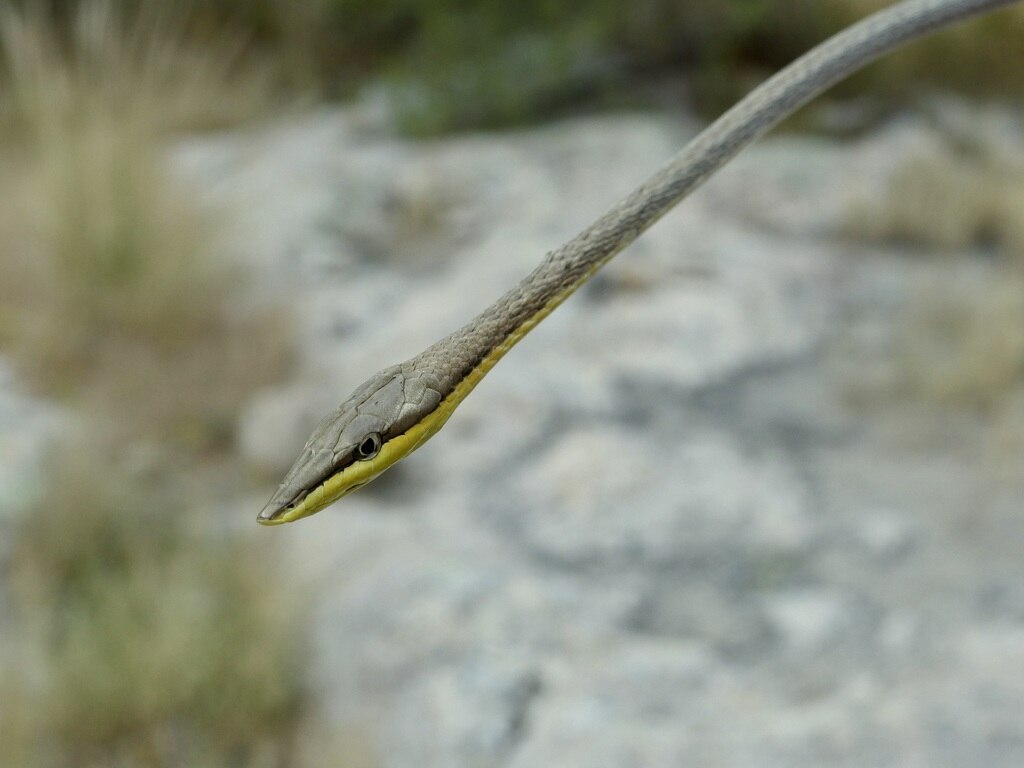
Indigenous peoples throughout the vine snake’s range have long recognized this remarkable predator, incorporating it into their traditional knowledge systems and folklore. Among certain Amazonian tribes, the vine snake figures prominently in creation myths, often symbolizing cunning and patience as valuable survival traits. Their almost supernatural ability to disappear into the forest canopy has earned them names translating roughly to “ghost serpent” or “invisible one” in various indigenous languages. Despite their mild venom, vine snakes are generally avoided by local populations, who respect their hunting prowess. Modern interactions with humans remain relatively limited due to their canopy lifestyle, though habitat destruction increasingly forces these snakes into contact with human settlements. Conservation education programs in several countries now highlight the vine snake as an ambassador species, using their remarkable adaptations to build appreciation for rainforest biodiversity and the complex ecological relationships that sustain these ecosystems.
Conservation Challenges and Status
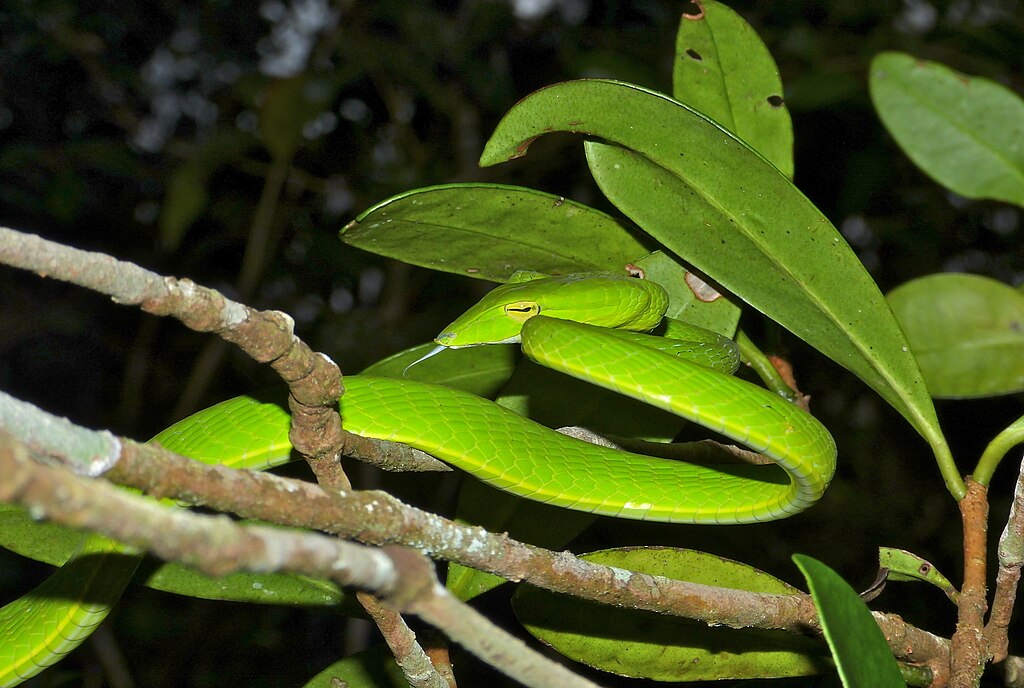
While vine snakes are not currently classified as endangered, their specialized ecological niche makes them particularly vulnerable to environmental changes. Deforestation represents the most immediate threat, with estimates suggesting that over 20% of suitable habitat has been lost in the past three decades alone. Climate change poses additional challenges, potentially disrupting the delicate timing of breeding cycles and altering prey availability patterns. Conservation efforts face the additional challenge that vine snakes require not just intact forest but functional ecosystems including healthy primate populations to sustain their specialized hunting behaviors. Several protected areas throughout Central and South America serve as important refuges, though fragmentation between these zones limits genetic exchange between populations. Recent conservation initiatives have begun incorporating vine snake habitat requirements into broader forest management plans, recognizing that their presence indicates ecosystem health and intact ecological relationships.
Similar Strategies in Other Species
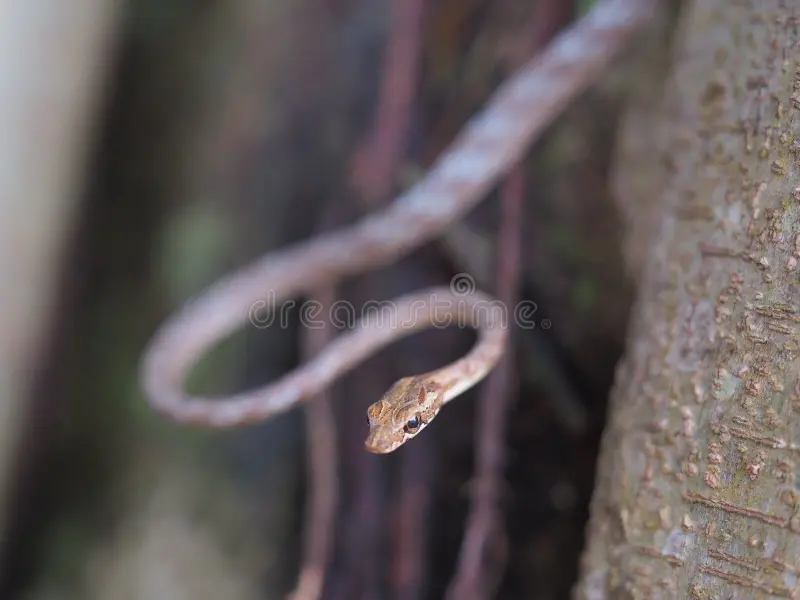
The vine snake’s broken branch mimicry represents one example within a broader spectrum of deceptive hunting strategies evolved by different predators worldwide. The Malaysian twig snake (Ahaetulla prasina) demonstrates comparable behavioral adaptations despite being only distantly related, suggesting convergent evolution driven by similar ecological pressures. Among invertebrates, certain mantis species employ related strategies, positioning themselves to resemble damaged plant parts and actively swaying to enhance the deception. Marine predators like the leafy seadragon and certain cuttlefish species utilize comparable principles, creating moving deceptions that exploit prey curiosity. These parallel adaptations across distant evolutionary lineages highlight how similar selective pressures can produce comparable solutions even in vastly different environments. What distinguishes the vine snake’s approach is the specific targeting of highly intelligent prey, requiring a more sophisticated deception than strategies aimed at less cognitively advanced species.
In coming years, emerging technologies promise to deepen our understanding of this remarkable predator. Advanced bio-logging devices small enough to be carried by the snake may soon enable researchers to track hunting success rates and energy expenditure in the wild. Genetic studies are beginning to illuminate population structures and the potential for local adaptations in hunting behaviors across different regions. As our understanding of animal cognition evolves, the vine snake’s hunting strategy raises fascinating questions about the cognitive demands of creating and maintaining such sophisticated deceptions. This remarkable reptile continues to challenge our understanding of predator-prey relationships and the extraordinary adaptations that emerge through natural selection. By studying such specialized hunting strategies, scientists gain valuable insights into both the evolutionary process and the complex ecological relationships that shape life in our planet’s most diverse ecosystems.




